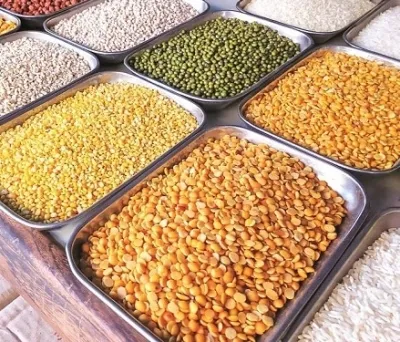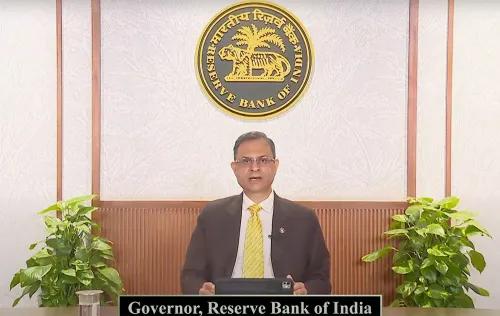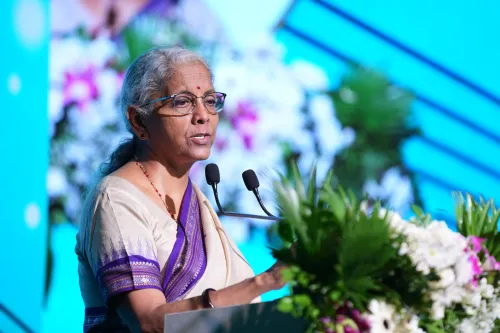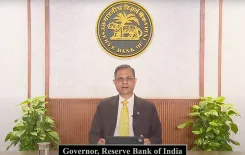What is the Cabinet's Rs 11,440 crore plan for self-reliance in pulses?

Synopsis
Key Takeaways
- Financial allocation: Rs 11,440 crore for the pulses mission.
- Targeted support: Benefits for around 2 crore farmers.
- Seed distribution: 126 lakh quintals of certified seeds.
- Area expansion: Increasing pulses area by 35 lakh hectares.
- Procurement assurance: 100% assured procurement at Minimum Support Prices.
New Delhi, Oct 1 (NationPress) The Union Cabinet, led by Prime Minister Narendra Modi, on Wednesday sanctioned the Mission for Aatmanirbharta in Pulses with a financial commitment of Rs 11,440 crore. This groundbreaking initiative aims to enhance domestic production and achieve self-sufficiency in pulses, set to be rolled out over a six-year span from 2025-26 to 2030-31.
The Pulses Mission is anticipated to support approximately 2 crore farmers by providing superior seeds, developing post-harvest infrastructure, and ensuring 100% procurement of tur, urad, and masoor pulses from farmers at the Minimum Support Price over the next four years, as stated in an official announcement.
Pulses are crucial for India’s agricultural systems and dietary needs. As the world’s largest producer and consumer of pulses, India's rising incomes and living standards have led to increased consumption. However, domestic production has struggled to match this demand, resulting in a 15–20% surge in imports.
To ensure the availability of improved varieties, 126 lakh quintals of certified seeds will be distributed to pulse farmers, covering 370 lakh hectares by 2030-31.
The Mission also intends to increase the area under pulses by an additional 35 lakh hectares by utilizing rice fallow areas and other diversifiable lands, promoting intercropping and crop diversification. To support this, 88 lakh seed kits will be provided free of charge to farmers.
This six-year initiative, unveiled in the FY 2025-26 Budget, aims to reduce import reliance, satisfy rising demand, maximize production, and boost farmers' earnings. A thorough strategy encompassing research, seed systems, area expansion, procurement, and price stability will be implemented.
The focus will be on developing and distributing new high-yield, pest-resistant, and climate-resilient pulse varieties. Multi-location trials will be conducted in key pulse-producing states to ensure regional adaptability.
By 2030-31, the Mission aims to broaden the area under pulses to 310 lakh hectares, elevate production to 350 lakh tonnes, and enhance yield to 1130 kg/ha. In addition to productivity improvements, the Mission is expected to create substantial job opportunities.
Furthermore, to guarantee access to high-quality seeds, states will draft five-year rolling seed production plans. The ICAR Foundation will oversee breeder seed production while state and central agencies will manage certified seed production, all closely monitored via the Seed Authentication, Traceability & Holistic Inventory (SATHI) portal.
This will align with the soil health program, the Sub-Mission on Agricultural Mechanization, balanced fertilizer usage, plant protection, and comprehensive demonstrations by ICAR, KVKs, and state Agriculture Departments to promote best practices.
Farmers and seed growers will undergo capacity-building through organized training programs focusing on sustainable methods and modern technologies.
To strengthen markets and value chains, the Mission will facilitate the development of post-harvest infrastructure, including 1,000 processing units, which will help minimize crop losses, enhance value addition, and elevate farmers' incomes. A maximum subsidy of Rs 25 lakh will be available for establishing processing and packaging units.
The Mission will adopt a cluster-based approach, customizing interventions to meet the specific needs of each cluster. This will allow for more efficient resource allocation, improved productivity, and promote geographic diversification of pulse production.
A significant aspect of the Mission will be ensuring maximum procurement of tur, urad, and masoor under the Price Support Scheme (PSS) of PM-AASHA. NAFED and NCCF will execute 100% procurement in participating states for the next four years from farmers registered with these agencies.
Moreover, to ensure farmer confidence, the Mission will implement a mechanism to monitor global pulse prices.
The overall objective of this mission is to achieve Atmanirbharta (self-reliance) in pulses, reduce import dependency, and conserve valuable foreign exchange while enhancing farmers' incomes. Additionally, this initiative will yield significant environmental benefits through climate-resilient practices, improved soil health, and effective utilization of crop fallow areas.









